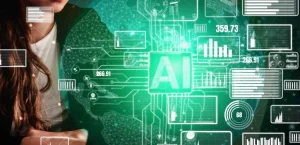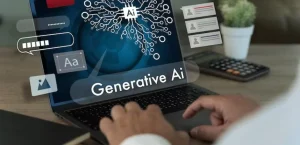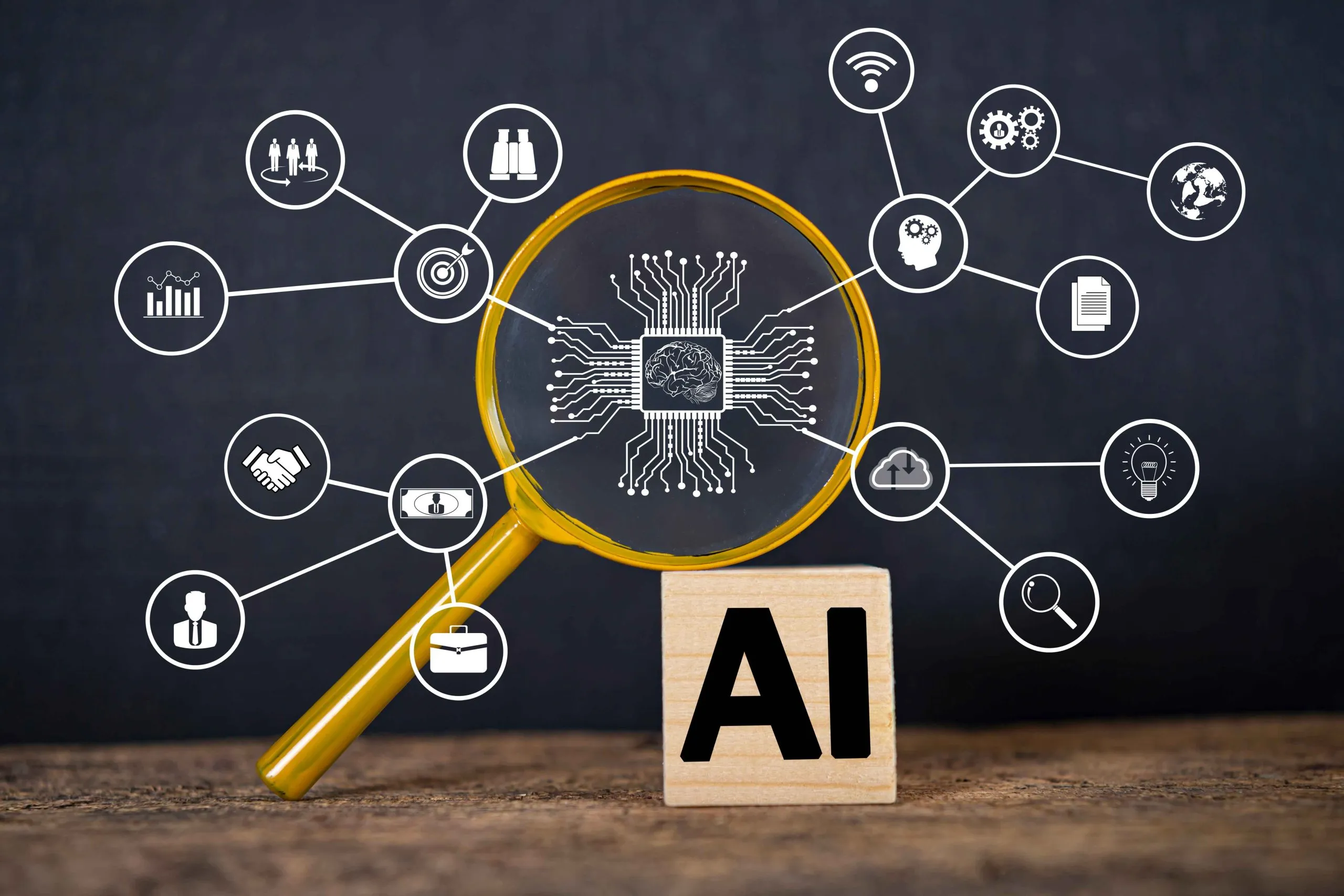We provide generative AI consulting services to help you harness AI’s potential for better operations and products. Our expertise in GANs, VAEs, and autoencoders ensures that our solutions are both advanced and ethically sound.

Professional, reliable, and results-driven – they delivered exactly what we needed, on time and within budget.
- James
Our generative AI consulting services in India are tailored to your organization’s specific needs and requirements and ensure a seamless and successful integration of generative AI technologies into your business processes.
We help find potential generative AI use cases & assess the potential impact of implementing generative AI solutions using feasibility studies.
We evaluate various generative AI tech/tools and help you choose the best ones for your needs by analyzing their features and compatibility.
We ensure the smooth adoption of generative AI apps within your existing systems. Our generative AI consultancy help maximize the benefits.
We ensure optimal performance of generative AI systems by monitoring and optimization using our generative AI development services.
Utilizing our expertise in critical regulations like GDPR, CCPA, and HIPAA, we prioritize data privacy for your generative AI solutions.
Our comprehensive training and support programs support you with the necessary skills to effectively utilize the generative AI solutions.
From strategy to deployment, we help you cover every stage of your generative AI journey with our generative AI solutions.

Whether you are a startup, enterprise, product company, digital agency, SME, or government entity, our generative AI consulting services cater to diverse technology requirements.
As a leading provider in the industry, our expertise allows us to stand out among the top generative AI consulting companies.
We help you protect your data and scale responsibly with our trusted generative AI solutions.
Partnering with businesses in diverse sectors to unlock new avenues for growth and innovation.
We specialize in engineering custom software that's both stable and secure, using a variety of tech tools.
Dive into bi-weekly sprints and rollouts aligned with project timelines.
Combined team tackles tasks, fulfilling user stories and sprint goals.
Daily check-ins led by the Scrum Master to discuss progress and tackle challenges.
Quality Engineers rigorously test new features, ensuring seamless integration.
Our team keeps the sprint backlog updated, staying on track to meet objectives.
Post-sprint reflections to refine strategies and enhance future sprints.
Choose from our flexible hiring models designed to fit your needs and budget.
For businesses with well-defined project scope and requirements.

For businesses with long-term project requirements or complex development process. They get more control of the process.

For businesses looking to pay for completed project instead of committing to fixed project cost.

In today's fast-moving digital world, artificial intelligence keeps getting better, coming up with new ways to solve tricky problems. One…
Learn MoreThis finance mobile application is developed for fast and quick transactions and is also helpful in loan applications. This application is a secure and trustworthy way to borrow money for short-term emergencies.
It is a renting platform that provides more than online rental services and can help in exploring a world of possibilities.
Companies are under immense pressure to optimize costs in today's highly competitive business landscape. But is slashing expenses in a…
Learn MoreGenerative AI refers to a class of artificial intelligence models and algorithms designed to generate new, original data that resembles and is similar to the data it was trained on.
These models can create new content by learning patterns and structures from existing datasets, such as images, text, audio, and more.
Generative AI technologies, like Generative Adversarial Networks (GANs), Variational Autoencoders (VAEs), and Recurrent Neural Networks (RNNs), are widely used in creative applications, content generation, data augmentation, and synthetic data creation.

The primary distinction between Generative AI and Conventional AI lies in their main objectives and capabilities:
Objective
Generative AI: The main goal of Generative AI is to produce new, original data that is similar to the training data, enabling the creation of synthetic content and generating novel outputs.
Conventional AI: Conventional AI aims to solve specific problems and make decisions based on existing data. It focuses on learning patterns from data to perform specific tasks, such as classification, regression, or decision-making.
Applications
Generative AI: Generative AI finds applications in creative fields, content generation, data augmentation, style transfer, and other areas where creating new content is essential.
Conventional AI: Conventional AI is widely used in various industries for tasks like image recognition, natural language processing, sentiment analysis, and fraud detection, focusing on making accurate predictions and decisions based on given data.
Output
Generative AI: The output of Generative AI is new and original data that did not exist in the training dataset, allowing for the generation of realistic and diverse content.
Conventional AI: The output of Conventional AI is typically a specific prediction, classification, or decision based on the input data, with a focus on accuracy and performance for predefined tasks.

Generative AI has a wide range of real-world applications that span various industries and domains. Some of the prominent real-world applications of Generative AI include:
These real-world applications demonstrate the versatility and potential impact of Generative AI across various industries, transforming how content is created, data is analyzed, and innovative solutions are developed.

Generative AI functions using advanced machine learning algorithms and models to generate new data closely resembling the patterns and characteristics of the training data it was exposed to. The key components and steps involved in the functioning of Generative AI are as follows:
Validation and Testing: After the generative model is trained, it undergoes validation and testing to ensure that the generated data meets the desired quality and usefulness for the intended application.

Generative AI offers numerous benefits across various industries and applications. Some of the key advantages of Generative AI include:
Generative AI’s ability to generate realistic and diverse data, content, and experiences offers transformative solutions to various industries, empowering businesses to be more creative, efficient, and innovative.

Generative AI leverages various cutting-edge technologies to achieve its capabilities. Some of the key technologies used in Generative AI include:
Integrating generative AI into existing systems and workflows requires careful planning and consideration. The following steps outline how generative AI can be effectively integrated:
By following these steps, generative AI can seamlessly integrate into existing systems and workflows, empowering organizations to leverage the transformative capabilities of this technology efficiently and effectively.

Generative AI research and development have made remarkable progress, but there are several current limitations and challenges that researchers and developers continue to face:
Despite these challenges, ongoing research efforts continuously address these limitations, pushing the boundaries of generative AI technology and opening up exciting possibilities for its real-world applications.
Ans. Choose ValueCoders for Generative AI consulting services in India:
Ans. Yes, Generative AI solutions can save time in complex data analysis and decision-making processes by automating data generation, augmenting datasets, and providing valuable insights from large volumes of data, leading to faster and more informed decisions.
Ans. Generative AI solutions offer a high degree of customization, allowing them to be tailored to specific business needs. This customization encompasses various aspects, including input data, output formats, model behavior, and domain-specific requirements.
Ans. The potential return on investment (ROI) from Generative AI consulting is substantial. Businesses can streamline processes, enhance productivity, and develop innovative products by leveraging advanced AI techniques. This can lead to increased efficiency, reduced costs, improved customer experiences, and competitive advantages.
We are grateful for our clients’ trust in us, and we take great pride in delivering quality solutions that exceed their expectations. Here is what some of them have to say about us:

Co-founder, Miracle Choice

Executive Director

Director

Director
Trusted by Startups and Fortune 500 companies
We can handle projects of all complexities.
Startups to Fortune 500, we have worked with all.
Top 1% industry talent to ensure your digital success.



Let's discuss how we can bring your vision to life.